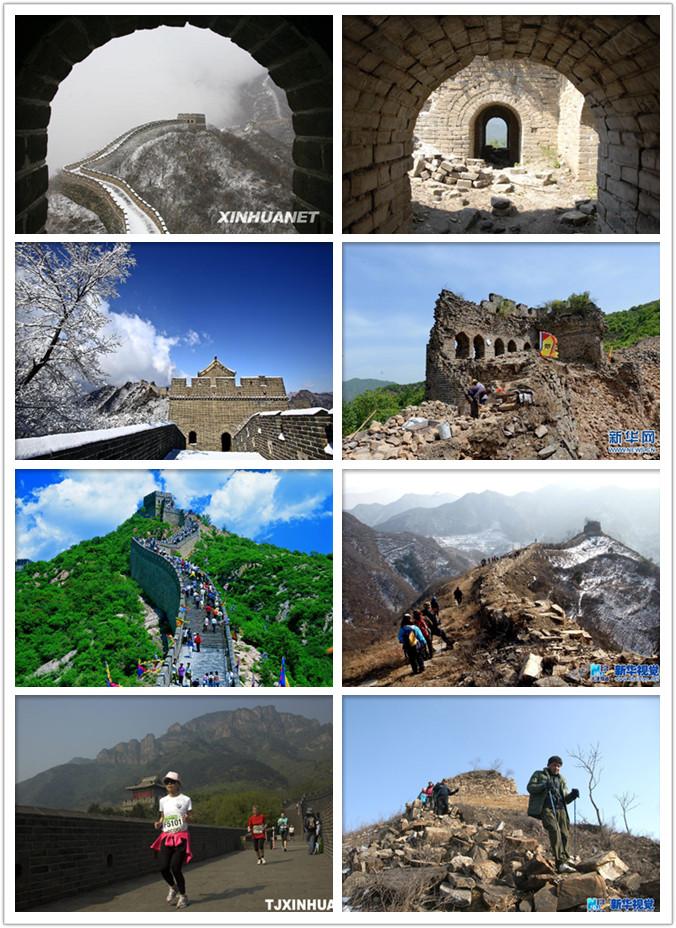
The Great Wall in northern China cannot be seen with the naked eye from high orbit above the Earth or from the moon, as some people believe. For centuries, those who have wanted to see the wall have had to make a trip to Asia to lay eyes on one of the greatest surviving artificial structures in the world.
These days, though, there is less of it to see, according to an article in The Beijing Times that cites local officials, statistics and a Great Wall scholar. The article, which appeared on Sunday, said that 22 percent of what was considered the Ming dynasty Great Wall had disappeared. And the total length of the parts of the wall that have vanished, 1,961 kilometers, or 1,219 miles, is equal to about 30 percent of the artificial part of the Great Wall. (More than 6,200 kilometers of the Ming-era wall’s 8,851.8 kilometers is artificial, and the rest consist of natural barriers, the article said.)
Those numbers were released in 2012 by the State Administration of Cultural Heritage, and no doubt more of the wall has disappeared since then.
The Beijing Times article caused a stir on social media on Monday. People’s Daily, the Communist Party’s flagship newspaper, wrote in English on Twitter: “Report on vanishing Great Wall shocks the country.” Global Times, a newspaper overseen by People’s Daily, expressed anxiety in a Twitter post: “Nearly 30 percent of Great Wall disappears. Fancy a trip before it’s all gone?” People’s Daily Online and Global Times both ran stories on Monday that repeated the findings of The Beijing Times.
Nearly 30 percent of Great Wall disappears. Fancy a trip before it’s all gone? Photos: Xinhua bit.ly/1ImTta8
The Ming dynasty Great Wall also stretched into Gansu and ended at a desert site called Jiayuguan, east of the surviving Han sections.
It is the parts of the wall built during the Ming, which ruled China from 1368 to 1644, that are the best preserved. In Beijing, most tourists go to see the Ming wall at the renovated sections at Badaling or Mutianyu. In November 2009, President Obama walked along a temporarily closed-off section of Badaling, which is usually mobbed with tourists. In March of last year, his wife, Michelle Obama, went to Mutianyu with their two daughters and, to descend, took a ride in a plastic sled down a popular tourist slide.
Outside Badaling, Mutianyu and a handful of other heavily visited sections, there is the “wild wall,” and it is in these areas — the vast majority of the Ming-era wall — that the structure is vanishing.
The Beijing Times reported that the main causes were erosion from wind and rain, the plundering of bricks by nearby villagers to use in construction and the scrambling over parts of the wild wall by more adventurous tourists.
Some of the bricks taken by villagers have Chinese words carved into them. Scholars judge those bricks to be invaluable historical relics, yet the same bricks can be found sold in village markets near the Great Wall for about 40 to 50 renminbi, or about $7 to $8 — and that can be bargained down to 30 renminbi, according to The Beijing Times.
In 2006, China established regulations for the protection of the Great Wall. But The Beijing Times said that with little in the way of resources devoted to preservation, and given the fact that the Ming-era wall runs through some impoverished counties, the regulations amount to “a mere scrap of paper.”
Some Chinese citizens expressed concern online after seeing the Beijing Times report. “The modern Chinese have done what people for centuries were embarrassed to do and what the invaders could not do,” one person wrote on a Sina Weibo microblog. “The wall is being destroyed by the hands of the descendants.”
Yifu Dong contributed research from Beijing, and Crystal Tse from Hong Kong.


No comments:
Post a Comment